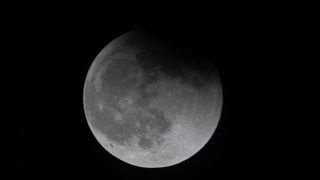
When you look up in the night sky, our moon is unmissable.Just like Earth, it's round and has a solid, rocky surface. But is our moon actually a planet?
The answer is technically no — at least according to NASA and the International Astronomical Union (IAU), an important global authority in astronomy.
An object needs to meet four criteria to be a planet, per the IAU. It must be big enough that gravity pulls it into a nice, round shape and big enough to have cleared out all the asteroids and other junk from its orbit. It also needs to orbit the sun, and — importantly for the moon — a planet by definition is not a satellite of another object.
The IAU's definition of a planet was finalized in 2006. But that hasn't always been the consensus. The ancient Greeks, for instance, thought the moon was a planet. (They did also think the Earth was the center of the universe, though, so they weren't quite right about a few things.)
Even today, the IAU definition is a bit controversial. "Whether or not the moon is a planet actually depends on who you ask," Skylar Grayson, an astronomer at Arizona State University, told Live Science. The 2006 IAU definition "draws a fairly arbitrary line between planets and dwarf planets that (in)famously led to the demotion of Pluto," she added. "Some planetary scientists thus elect to consider different definitions of planets, some of which include Pluto and the other dwarf planets, and others that even include the moon."
Related: Why is Pluto not considered a planet?
One alternate definition comes from geophysics: A planet (or planetary body) is anything massive enough to be round but small enough that it couldn't generate energy from nuclear fusion at any point in its life. The first half of this definition divides planets from smaller bits of the solar system like asteroids, and the second half draws a line between planets and stars. By this definition, the Earth would be a planet — and so would the moon and Pluto.
Most people think of a moon as something that's smaller than a planet, especially the planet it orbits. But this gets complicated, too. Our moon is surprisingly big compared to our planet — a whopping one-fourth the size of Earth. And Pluto's biggest "moon," Charon, is actually half the size of Pluto — big enough that it's often referred to as a binary planet instead of a moon. Looking beyond the solar system, astronomers have even found a moon as big as Neptune orbiting a planet the size of Jupiter about 8,000 light-years from Earth.
The IAU definition is the most widely accepted one for planethood, and it clearly states our moon is not a planet. However, "The vagueness around what is and isn't a planet points to how hard it can be to define terms in astronomy," Grayson said. "Most things in the universe exist not in neat boxes but rather on a spectrum, and we have to decide where we want to draw the lines between categories. Sometimes those lines are agreed upon, and sometimes they're not."


评论(0)